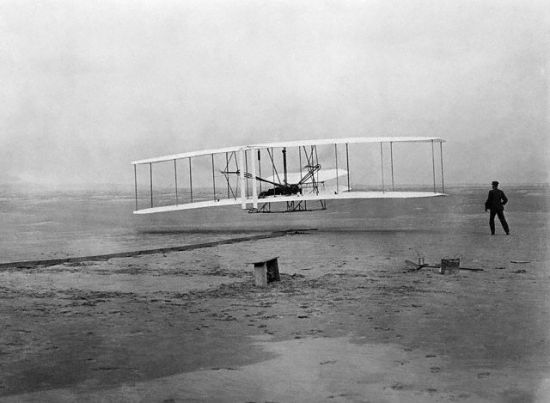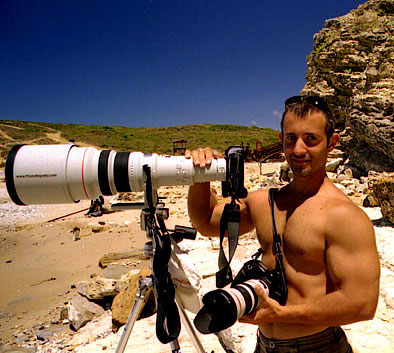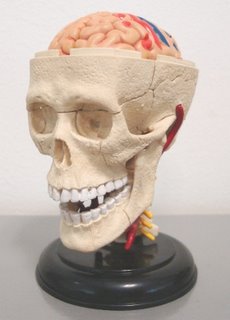
Boys boys boys.
Do you know what boys like?
Girls.
Of course they do.
I didn't ask
who they like. I asked -
what.Toys.
Yes.
Boys like their toys.
Many boys like toys that are long, thick and hard - like a gigantic penis.
We call them "
phallic" toys.
Through the centuries, many phallic toys have emerged and thrilled generations of boys of all ages.
And because men were the key players in designing these playthings, they became shaped more and more like humongous dicks.
Sadly, it's not a Boy's World anymore.
There are ominous signs that the glory days of toys that resemble ginormous manhoods are coming to an end.
In its place are toys that look... well... totally girlie.
Can it be true?Oh the horrors!
Fresh Brainz is truly concerned with this flaccid state of affairs. We are interested in all types of evolution, not just biological evolution.
As such, we are delighted to bring you an extensive evolutionary history of three popular boy's toys.
In addition, we bring you a sad projection of what lies in the near future, based on current design trends.
1. Guns Boys like guns.
BANG BANG! YOU'RE DEAD!
For about five hundred years, boys have been killing each other with fire-weaponry - both for play and for real.
a. Early daysIn the beginning, spherical bullets were fired out of guns that had smooth-bore barrels. By practical necessity, guns must have long barrels in order to be somewhat accurate.

Thus, guns already look like johnsons right from Day One.
b. Height of machismoThen the rifled barrel was invented. Spiral grooves were cut on the inside of the barrel, imparting spin to the bullet as it passed through.
In conjunction with a long barrel, spin-stabilization allowed a bullet to reach long distances with great accuracy.
The halcyon days of the long rifle was during the Second World War, where millions of bolt-action rifles over a metre long were used on the front-line.

Using these toys, boys can rain death on their enemies more than a kilometre away.
Handguns were getting longer and more powerful too. Who can forget Charles Bronson's "Wildey" from the
Death Wish movies?

Those were the good old days when guns were made for real men.
Only real men had hands strong enough to handle them.
c. Signs and portentsAlas the good times did not last. War experience showed that soldiers rarely fought at distances over a few hundred metres.
The rate of fire was more important than range or accuracy. Rifles were re-designed to be shorter and less unwieldy. The assault rifle was born.
Long barrels were slowly becoming obsolete.
Using the "bullpup" configuration (with the ammo box behind the pistol grip), designers could make the assault rifle even shorter.

Then the rot started. Instead of MANLY colours such as black, silver and brown, manufacturers began to produce guns in a wide variety of colours!
 Pink!?!!
Pink!?!!And to make things much, much worse,
Hello Kitty decorations started to appear on them.

*gasp*
Why? For the love of Clint Eastwood...
Why?d. Hello Kitty future
Extrapolating from current trends and emerging technologies, Fresh Brainz presents two possible gun designs in the near future.

Our future assault rifle is shown here in neon green, with interchangeable accessories in 64 popular colours. Ergonomically designed, its outer shell is made using weather-proof plastic and composite materials, with metallic parts completely concealed inside. It is equipped with an optical sight with 8X zoom and an ammo counter.
The first round is fired electrically and the rest by gas blowback, so there is no need to cock the weapon first. It is also built to fire the latest caseless ammunition, so there is no mess and no fuss.
Just mechanized death.

If you prefer a smaller, more discreet weapon, why not select one of our handy handguns? It's available in pastel yellow, and 255 other colours - including eggshell of course. The weapon is completely smooth; no parts will get snagged on your pocket or handbag.
It packs 20 rounds of small calibre bullets that are designed to cause disabling pain but inflict minimal injury to an assailant, robber or random passerby. Again the first round is electrically fired so there is no need to rack a slide or cock a hammer.
Optional: face detection autofocus system that empowers you to avoid wasting bullets on inanimate objects.
2. AeroplanesBoys also like planes.
Speed! Freedom!
Indeed, nothing feels more like freedom than being strapped tightly onto a seat and flying on an assigned flight path in a crowded sky with a thousand other aircraft.
"Please remain in your holding pattern."
Alright!
a. Early daysUnlike guns, the first aeroplane in no way resembled a massive schlong.

You can see that it looked more like a giant box kite.
Of course, only REAL men could fly, but aeroplanes were not yet manly enough to match their pilots' manliness.
b. Height of machismo
The use of fabric, wood and later aluminium skin to enclose the passengers allowed aeroplanes to have a more substantial appearance.
As aircraft soared to greater speeds and heights, they started to become sleeker and longer. This trend really peaked at the dawn of the jet age.
Take this F-104 Starfighter for instance.

The wings are so short that you can hardly see them in this picture. It was nicknamed "The Missile With A Man In It".
That is a very polite nickname.
I would have called it "The Flying Penis".
Such designs are not confined to military aircraft only.
Check out this passenger airliner.

What a glorious take-off!
Sigh... they don't make 'em like they used to.
c. Signs and portents In time, jet engines could produce so much power that speed was no longer a limitation.
Control was.
At supersonic speeds, jet fighters cannot make quick turns. Even if the airframe could withstand the aerodynamic stresses, human pilots couldn't.
Depending on the direction of turn, pilots might either black-out or red-out (blood forced into the brainz).
Once again, war experience demonstrated that most dogfights occur at subsonic speeds where the aircraft is more manoeuvrable and rapid turns are better tolerated by human beings.
This, coupled with the invention of long-range, autonomous missiles, made it unnecessary to continue building faster and faster interceptors.
The pressing need to evade radar detection also drastically altered aircraft designs.

Modern fighters appear to be flattened out because vertical surfaces are minimized to reduce their radar signature. Missiles and other ordnance are carried inside internal weapon bays to eliminate radar reflection.
What about modern passenger planes?

There are few things in this world that are more
evil than Hello Kitty.
Precious few.
d. Hello Kitty futureWhat will future aeroplanes look like?

In order to minimize radar reflection to the absolute minimum, our jet fighter design has no vertical surfaces at all. It is completely flat - a flying wing that carries all its weapons internally, including a 20mm cannon on the left side of its nose.
The intakes and exhaust of its engines are thin, narrow slits to reduce the infra-red signature, allowing the vehicle to evade heat-seeking missiles.
As for its colour scheme: do you really need camouflage on a fighter than can hit targets over 100 km away?
OK you still do, so baby blue is good.
But we can paint a huge
Bad Badtz-Maru on it if you want, any time.

Civil airliners evolve in a different direction. The increasing demand for cheap air travel has resulted in this hot pink monstrosity. As the bypass ratio of turbofan engines continue to increase, they become even shorter and fatter. The airframe also becomes shorter and fatter.
In order to stabilize this aircraft a very tall tail is needed. Winglets continue to increase in size due to ever rising requirements for fuel efficiency.
Despite all of these improvements, the economy class seat pitch is as miserable as it has always been.
Even in the future, some grand traditions should be observed.
3. CamerasLast but not least, boys like cameras.
A fleeting moment captured for all eternity on film.
How romantic!
And in this digital age of ubiquitous camera-phones, a private moment that you have experienced can now be spread far and wide throughout the internet without your knowledge - turning you into an instant celebrity.
I think I'm in love.
a. Early daysLike aeroplanes, the earliest cameras don't look like gargantuan weiners at all. They are basically large wooden boxes.

Notice that it's a MAN taking the photo.
b. Height of machismo
Improved film technology permitted the development of smaller camera boxes. At the same time, camera optics was becoming sharper, more powerful and more versatile.
Take the zoom lens, for example, which was
invented in 1932 to allow photographers to vary the focal length of their optics for a closer shot.
Gradually the optics of the camera became longer and more prominent than the camera body itself.
In time, professional photographers began to routinely use hefty zooms and telephoto lenses that are as big as bazookas.
Check out the equipment on this guy.

You'd need strong, powerful muscles to handle this baby, no doubt about it.
It's a man's job.
The pinnacle of this push towards bigger and bigger lenses was reached in the early 1990's, with the development of the 16kg Nikkor 1200-1700mm (f/5.6-8.0) zoom lens...

...and the 16kg Canon EF 1200mm (f/5.6) telephoto lens.

Truly exemplars of excellence.
c. Signs and portents35mm film cameras needed big zooms because a long focal length is needed to fill up the 24mm x 36mm frame on the film negative.
When digital cameras were invented, CCD sensors could be made smaller than the film negative area. As such, lighter and more compact lenses provide the same angle of view as its 35mm equivalent.
In addition, during the early 2000's, a new lens technology emerged that allowed the light path to be folded 90 degrees inside the body of a camera - somewhat like a periscope.
The optics can zoom without extending outside the body of the camera. One of the earliest "non-extending zooms" to be available on the market was the Minolta DiMAGE X.

Many companies followed this trend and produced camera models that resemble a pack of cards.
They also manufactured cameras in a wide variety of colours, such as pink.
Who else got into the act? You've guessed it.

Oh no, here we go again!
Hmm, 5 megapixels? That sounds tad manly though...
d. Hello Kitty futureProfessional photographers who are reading this post might be thinking:
"Ok, so there are dinky consumer cameras that are round and pink. BIG fucking deal. Professional cameras will always be big, black and equipped with long lenses. BWAHAHAHAHAR!"
You laughed too soon.
The latest
liquid zoom lens technology has the potential to make camera optics even more compact.
As for the colour of the camera body - let us recall that not so long ago computers only came in black and grey.
Be brave now...

This is the future of professional photography. Pink body (or 15 other colour options) with a lens housing for interchangeable non-protruding lenses. A small 30 megapixel sensor and liquid lens elements make this compact camera possible. It even has a pressure sensitive shutter button that detects how hard you press on it, so that it can automatically turn on its burst mode.
And like a few consumer cameras today, it has an "always capture" mode that records a number of frames constantly even before the shutter is pressed, so that the critical moment is never missed.
So, the future is not so phallic.
Boo-hoo-hoo... get used to it.
All your base are belong to Hello Kitty.
 OMFG.
OMFG.






 We do the hard work of stalking the globe for the dodgiest science articles - so you don't have to.
We do the hard work of stalking the globe for the dodgiest science articles - so you don't have to.


























 Imagine you're in a vehicle, say a car.
Imagine you're in a vehicle, say a car.










